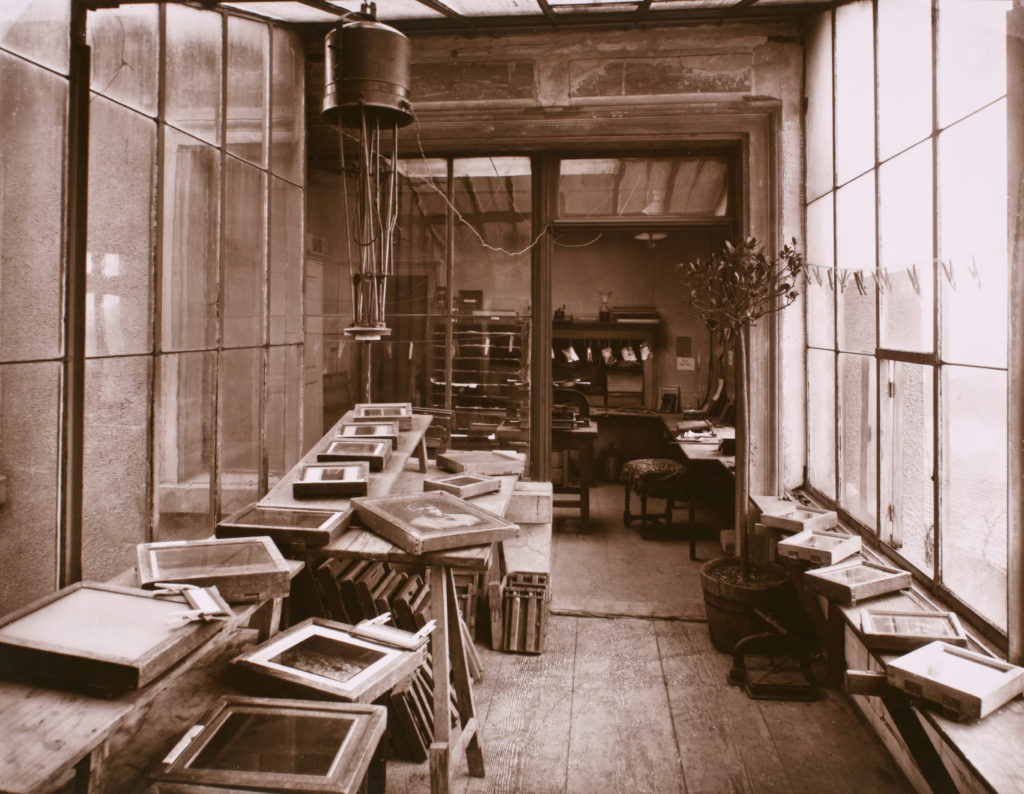Positive Contact Printing from 1840
The nature of the negative implied a positive print. This is what Frédéric Dillaye thought about it at the beginning of the century:
“The exposure of the sensitised paper, or if you prefer, the printing of the collotype on paper, constitutes one of the most delicate operations, which some amateurs do not understand. Either through ignorance, or through laziness, some even go so far as to neglect this part of their art and entrust all of their negatives to the first photographic developer they meet (…). How naïve, really! (…) The actual artist is the only one who can do full justice to what remains, in effect, the presentation of his work.”
The Printing Frame
The exposure of the sensitised paper took place in a printing frame, an apparatus whose essential function was to ensure a perfect contact between the negative and the positive.
The exposure or insolation was carried out in daylight, with the printing frame placed on a leaning stand, in order to receive the light rays as well as possible; it could take ten minutes in sunlight, or a whole day in overcast weather… The daylight paper enabled a check at any time of the intensity of the picture, by opening one of the shutters at the back of the frame.
Once correctly exposed, the print was toned and fixed, then washed and dried.


